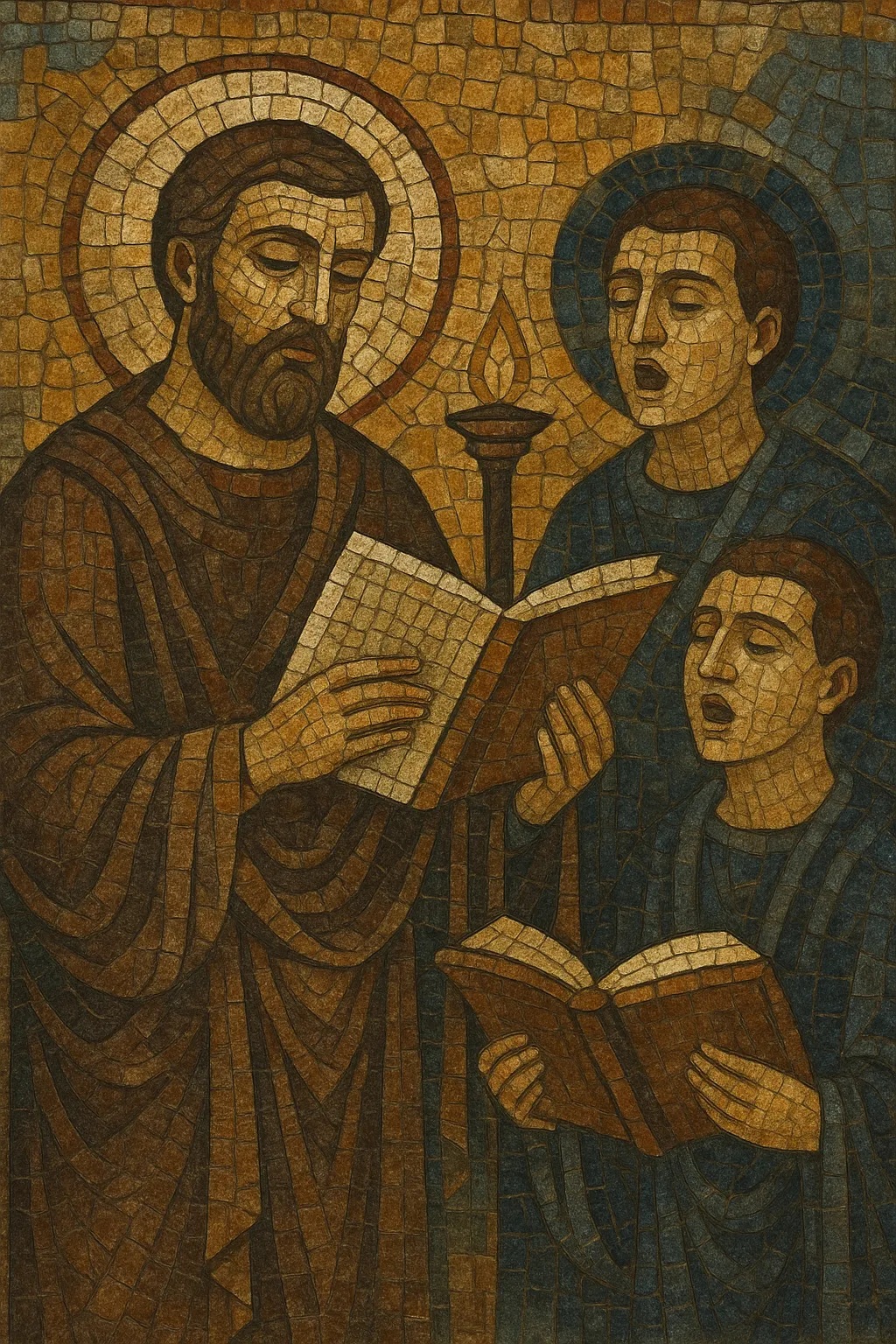Sticheron (plural: stichera) is a hymn type within the Byzantine chant tradition, sung in the services of the Eastern Orthodox and Byzantine Rite churches. Each sticheron is a self-contained troparion sung in alternation with psalm verses (stichoi)—hence its name—most commonly at Vespers and Matins.
Musically, stichera are monophonic and modal, composed in one of the eight echoi (modes) of the Octoechos. They range from relatively syllabic settings to more ornate, melismatic realizations (especially on great feasts). Performance is typically antiphonal by two choirs with an ison (drone) sustaining the tonal center, and the rhythm follows the natural prosody of the liturgical text rather than a strict meter.
The language has historically been Greek but the genre spread widely and exists in Church Slavonic, Arabic, Romanian, and other liturgical languages. Written in Byzantine neumatic notation, stichera weave fixed modal formulas with the rhetorical accents of the hymn text to produce a solemn, prayerful sound.
The sticheron emerged in the Byzantine Empire as part of the broader flowering of hymnography that followed the kontakion era. Its name reflects its liturgical function: hymns (stichera) sung between psalm verses (stichoi), particularly at Vespers (“Lord, I have cried…”) and Matins (Lauds, Aposticha). Early architects of the genre include John of Damascus and Cosmas of Maiuma, who, working within the Octoechos system, established modal and textual models that became normative.
During the Studite and Jerusalem traditions’ consolidation of the rite, the sticheron repertoire expanded dramatically. Hymnographers such as Joseph the Hymnographer, Theophanes the Branded (Graptos), and others produced cycles for feasts and saints, refining sticheraric and heirmologic styles. Notation moved toward the Middle Byzantine neumatic script, codifying melodic formulas (theseis) and cadential patterns across the eight echoi.
After 1453, the sticheron tradition persisted and evolved in Greek-speaking and Slavic lands. Cantors and composers such as Petros Peloponnesios systematized and recopied stichera in the New Method of Byzantine notation (early 19th century), ensuring continuity while enabling more consistent pedagogy. Parallel Slavic traditions adapted the sticheron idiom into local chant dialects.
With the rise of musicological interest and recorded performance, the sticheron repertoire has been widely revived. Ensembles and master chanters document regional variants, and scholarship has illuminated the interplay between text accentuation, modal syntax, and performance practice. Today, stichera remain central to Orthodox worship and a key portal into Byzantine modal thinking for composers and singers.


